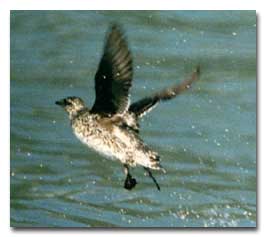Kittlitz's Murrelet

Common Name: Kittlitz's Murrelet
Scientific Name: Brachyramphus brevirostris
Kittlitz's Murrelet - Description
This uncommon little seabird is the least well known of the auk family, and probably the least well known of any bird in America. Kittlitz's occur from southeast Alaska to Siberia, but are common only in a few isolated areas, and the total population may number as few as 20,000 individuals.
Scientists have only observed a few Kittlitz's nests, and when you consider their location, it's easy to see why that is. Kittlitz's nest in solitary spots high in mountainous terrain, as far as 75 km from the sea! Nests often occur in recently de-glaciated terrain, and the highest concentrations of these birds have been reported in Alaska, in areas with mountainous coasts and many glaciers.
Kittlitz's Murrelet - Identification Tips
- Length: 7.5 inches
- Sexes similar
- Immature like basic-plumaged adult but has mottled underparts
- Pelagic bird only coming ashore to breed
- Small alcid that dives for food from water surface
- Thin, short, dark bill
- United States range largely confined to coastal Alaska
Adult Alternate
- Extensively mottled with brown and white
- White belly
- White outer tail feathers
Adult Basic
- Dark cap does not include the eye
- White throat, nape, and underparts
- Dark back, wings, and tail
- Indistinct breastband
- White scapulars
Similar Species
In breeding plumage, the brown and white plumage of the Kittlitz's Murrelet is similar only to the Marbled Murrelet but the Kittlitz's has a white belly and white outer tail feathers. In winter, the white scapulars dividing the dark back and wings are only shared by the Marbled Murrelet. However, it has a dark cap that extends below the eye and a less complete breast band. The white outer tail feathers of Kittlitz's Murrelet are diagnostic in all plumages. Juvenile Kittlitz's Murrelets might be confused with juvenile Pigeon Guillemots but have shorter necks, bills, and no white in the wing.
 Deep Sea Crabs
Deep Sea Crabs